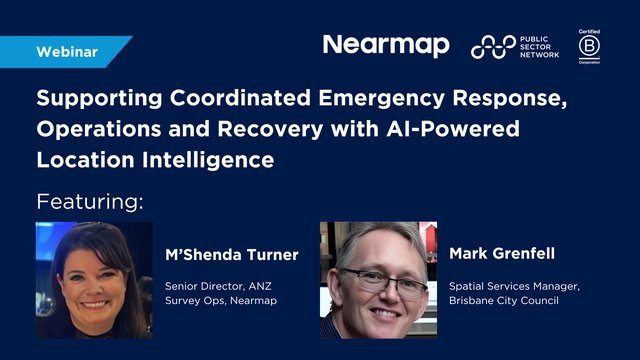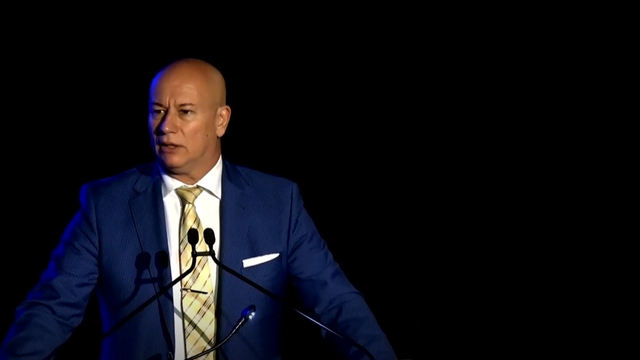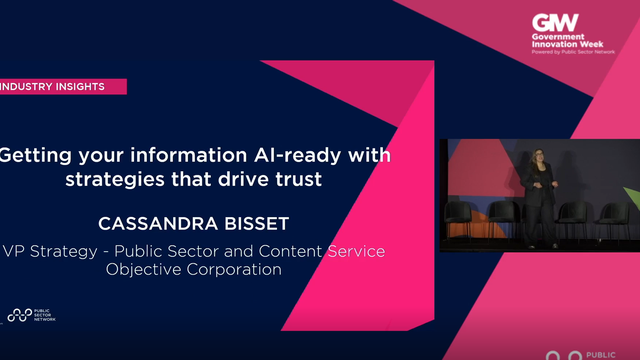Expanding and Enhancing Existing IoT Ecosystems
Panel Session: The Next Generation of IoT: Forecasting Trends and Technologies

Joshua Sattler,
General Manager, Innovation, Growth and Development Services,
City of Darwin

Professor Pascal Perez, Director,
SMART Infrastructure Facility,
University of Wollongong

Olivia Simons, Executive Manager,
Digital Innovation & Development,
City of Sydney
The Next Phase of IoT Applications at a Council Level

Local councils, like other tiers of government, are constantly looking to enhance and modernise their operations, incorporating the latest advances in technology. As part of their smart city developments, many local councils are starting to incorporate the internet of things (IoT) to give them a truer understanding of what is happening in their cities. For instance, Olivia Simons , the Executive Manager of Digital Innovation & Development at the City of Sydney, says that previously it was not uncommon for technology to be developed and advanced “for technology sake.” As much as cities always want to be seen to be innovative, some previous creations were not necessarily useful. IoT however is different. “Now we’re starting to really partner with our business areas to help them identify what actual issues and problems they want to work on.” Rather than Council going out and “implementing our own technology,” they are now using data from “cars and from buildings, etc, and bringing it altogether into actionable insights.”
Joshua Sattler , the General Manager of Innovation, Growth and Development Services at the City of Darwin, says that in other jurisdictions, people often need technology or apps to determine what the weather will be. In Darwin “we’ve got pretty much the same weather every day.” As such, the city is often a haven for tourists from the southern states, and before COVID-19, for international visitors too. However, this has previously caused problems with overbookings and congestion in some areas. So IoT presents an opportunity “to capture rapid forms of information and data sets, which we can use in almost real-time.” For instance, from a mobility perspective, IoT sensors have been fitted to e-Scooters and e-Bikes, which are popular throughout the city. “It’s about collaboratively looking at the information we can ingest from there, but also from a visitor information perspective. We can see where people are staying, where there might be congestion and use that data to transform open spaces and create a greater understanding.”
Professor Pascal Perez , the Director of the SMART Infrastructure Facility at the University of Wollongong, says that what is really exciting at the moment is the ability to do “greater research and development.” In most cases across Australia, IoT is “transitioning into phase two of its maturity model.” Phase one was really about “having and moving information and data into something that was reliable and understandable.” In other words, “simply sharing or displaying information.” This second phase is about “transitioning into actionable knowledge, where the information we have can be used in beneficial ways.” One of the reasons for this change is because “IoT literacy amongst councils in Australia is much greater compared to where it was just five years ago.” The curious part is that at the end of the day, “we are really talking about a piece of plastic and a communication card. The sensing part hasn’t evolved very much.” The sensors that have been used for years in the agricultural and maritime industries for things like water level sensing, are the same that are being used now. The difference is that they are being connected to smart technologies and apps. It means that there are much fewer limitations “for what we can sense, and that’s the exciting part for researchers.”
Ensuring the Success of the Next Phase

However, as much as IoT might be maturing in terms of its technology and applicability, Joshua Sattler says “there are a couple of traps around privacy and ethical implications,” which the City of Darwin has experienced first-hand – “we’ve got a few scars.” On a previous project, they developed the technology first and then told the community about it, which “was not the right approach,” especially because people felt it encroached on their privacy. “Most local governments have a privacy policy, but it sits on a shelf and no one looks at it. It’s usually well and truly outdated, whilst the technology in this space advances every six months to another level.” The only way to keep up is to “implement a privacy-by-design approach,” with appropriate and robust privacy impact assessments “at the front end, before you deploy.” Since their disastrous experience a few years ago, privacy is so much a part of their thinking now, that it is “almost like our OH&S model.” The ultimate purpose of this is to “mitigate any risk associated with the technology,” and to “be up front with the community so that they trust us.” The process of any new roll out needs to be transparent, and it needs to be visible “across the whole organisation.”
Professor Pascal Perez says that what might really be helping the community embrace technology, including the roll out of IoT, is “new software like QR codes. This has been a quantum leap for everybody in the community,” and is greatly assisting people to “understand and trust” technology. However, the Privacy Act has not caught up with the roll out of new technologies. In many ways, it’s still an “upstream battle, a massive hurdle that needs to be overcome.” For some councils or other organisations, it is so cumbersome that it is a battle not worth waging, which is why some people are calling for “the legal aspects associated with privacy to be revisited.” Though, as much as privacy might be a battle, often a bigger issue in terms of deployment is around interoperability. “Often the sensors are there and the different networks are in place, but they weren’t designed to talk to each other.” Without all the systems talking to each other and “discovering useful data,” there is almost no point in having the systems installed in the first place.
To overcome this, Olivia Simons says that not only do they also operate on a “principle of privacy-by-design,” but they are “putting a big investment into our core customer management platforms.” This past year in particular has proven to everyone how much governments rely on technology like contact tracing “to feel safe and secure.” Therefore, before installing any new technologies, including any IoT, they are ensuring that “all of the transactions and interactions we have with our customers and communities, along with the electronic management of people’s permissions and preferences, can be systematically delivered.”
”
“For the long-term sustainability of our council, one of our absolute core responsibilities is planning. That means being able to plan for things like waste, water and building management, as well as being able to predict and respond to insights from the data that we collect. It’s a huge opportunity we have now, that we didn’t have when we did our 10-year forward plans a decade ago.”
Olivia Simons, Executive Manager, Digital Innovation & Development, City of Sydney
Creating an IoT Ecosystem

Existing technology is generally about responding to current situations, not about predicting what might happen. For instance, a weather app may say that rain is coming to a certain area, but it is usually not very specific and has a high degree of error. Professor Pascal Perez says that one solution that the University of Wollongong has been assisting the City of Logan to develop is “a real-time simulation model.” It is clearly “still work in progress,” but the idea is that using IoT sensors and information from the weather bureau can allow the model to update the forecast for a particular area “every five minutes, and can predict where rain will fall for the next two hours, based on sensors at critical points across the city. This can be done at a relatively low cost compared with were we were just a couple of years ago.”
The key to the success of these kinds of models is to “engage with the community.” For instance, the university was involved in the installation of smart cameras at a council in western Sydney. The intention was to “monitor pedestrian and vehicle mobility in the city.” However, no one from the council knew where to put the cameras for the best data collection results. The university arranged a workshop to “explain why and how” the cameras were going to work and solve their problems. “By the end of the workshop, the council people were telling us where to put the cameras because we engaged with them and they understood the technology.”
”
”Without engagement, which is the first piece in the jigsaw, you are just dealing with technology components and raw data. So the key to success is continued engagement.”
Professor Pascal Perez, Director, SMART Infrastructure Facility, University of Wollongong
At the City of Darwin , Joshua Sattler says that they are using similar modelling for “our economic stimulus initiative.” They gathered information from parking meters, business sales and other data in order “to understand who was in the city at any given point in time, where they were likely to go, and what they were likely to spend their money on.” This allowed them to see where they needed to invest and how they needed to react. Until the pandemic came along, it also worked as a predictor of human and economic movement. In many ways, this kind of technology was a novelty for local government. State and federal governments were previously the main holders of personal data, but “having access to information and being able to make decisions based on data is critical for local governments.” Once privacy and community expectations are sorted out, making better decisions based on the data will be even easier.
”
”We need to shift the mind-set within local government to really play in this space. We need to be conscious of the technology we’re implementing, and ensure that it is delivered ethically and wrapped in privacy. It’s not about funding. It’s about doing and sharing, and delivering information in real-time. As such, we can inform what happens at a state or federal level rather than being dictated to.”
Joshua Sattler, General Manager, Innovation, Growth and Development Services, City of Darwin
Olivia Simons takes it one step further and says that it often seems that “European and American cities are so much more ahead of where Australian cities are, especially in terms of having integrated digital infrastructure in the urban realm.” Part of that of course is because the cities are set up differently. Many local governments across the world “run transport and electricity and many other things.” In Australia, those are all state-run operations. At the same time, to leverage some of the smart technologies like IoT , “we need to better understand the requirements of our citizens, and how we can deliver them. We need to understand where we fit in terms of technology and then apply that to service delivery.”
Professor Pascal Perez says that one of the issues in Australia in terms of any kind of technology roll out in general is the “three tier government structure. It is often not helpful in this case.” On top of that, though possibly related to that, is that large technology companies, particularly telcos, rarely communicate with each other or with the government in general. “We face a big mess from the start.” Furthermore, until “a couple of years ago, we didn’t have robust research and development in Australia so we had to import it,” only adding to the technology mess that was already in place, because the researchers had to spend a lot of time understanding the situation on the ground. In many ways, “it was the vendors that were the kings of the jungle.” Much of this is changing and “with engagement and patience we will get there,” but it will take some time. Once it does change, a greater ecosystem for the uptake of technologies like IoT will be in place.


































